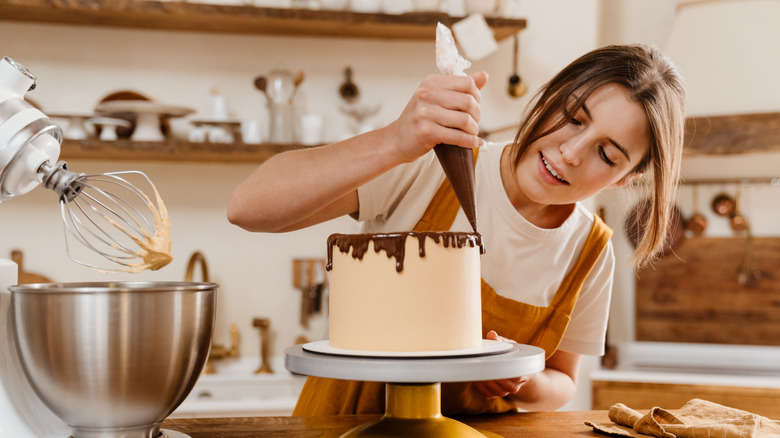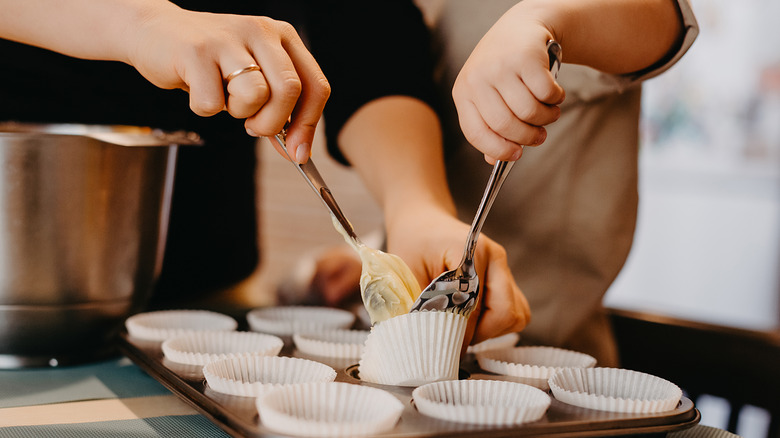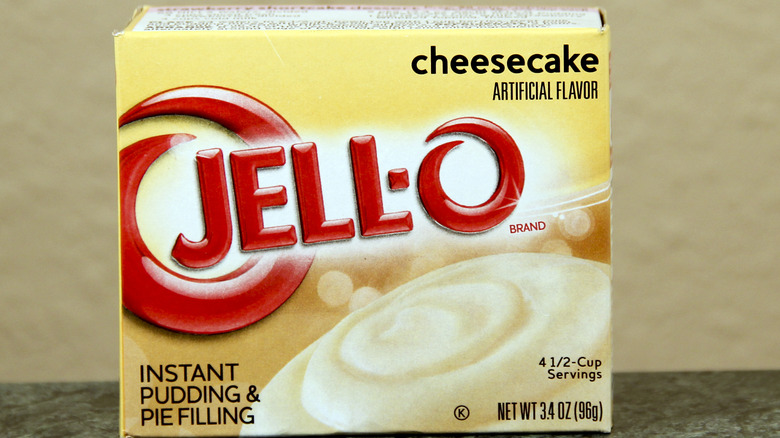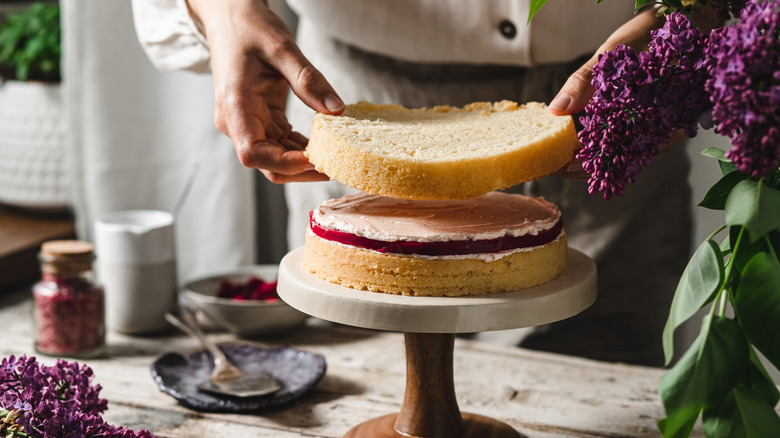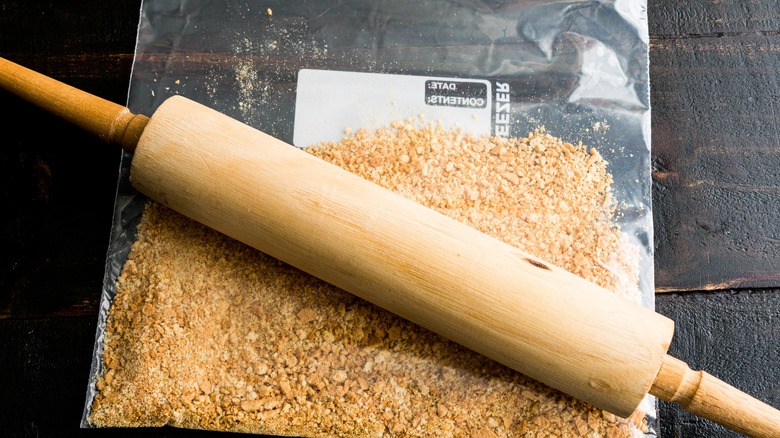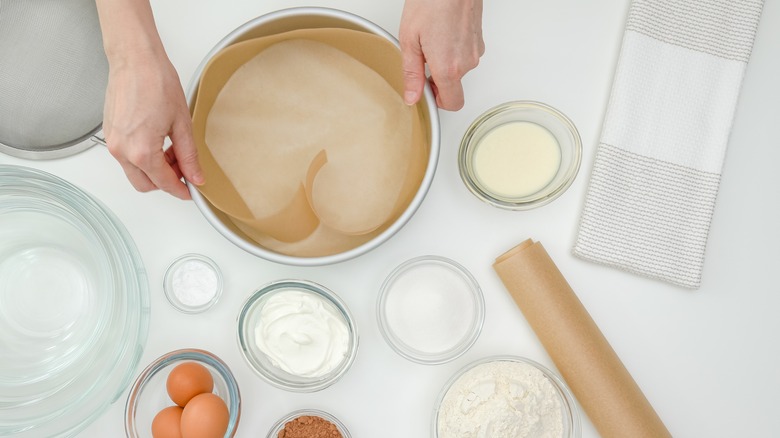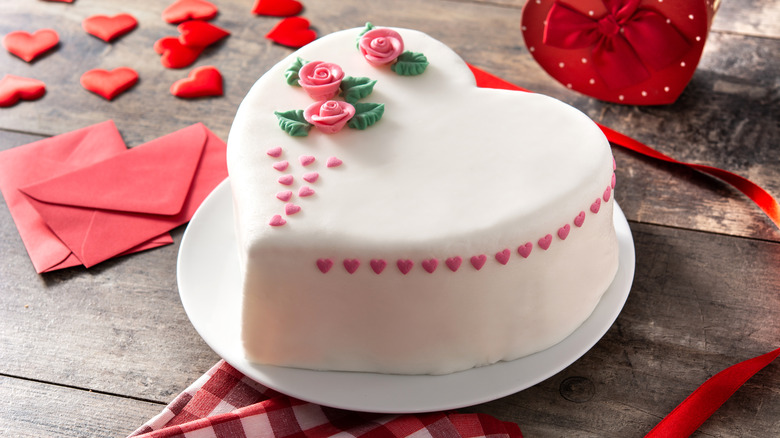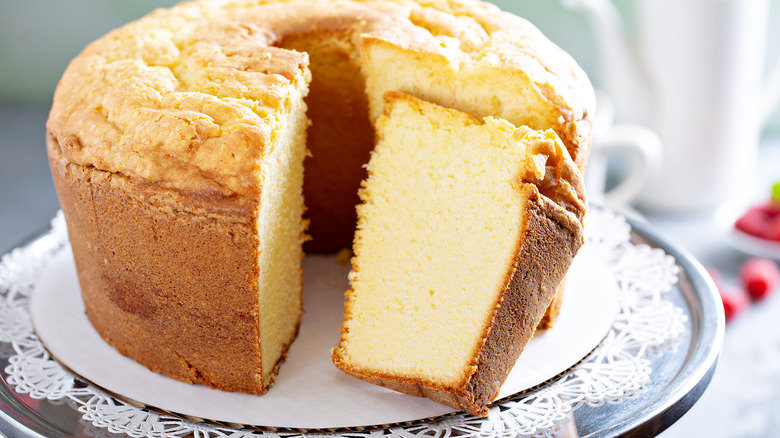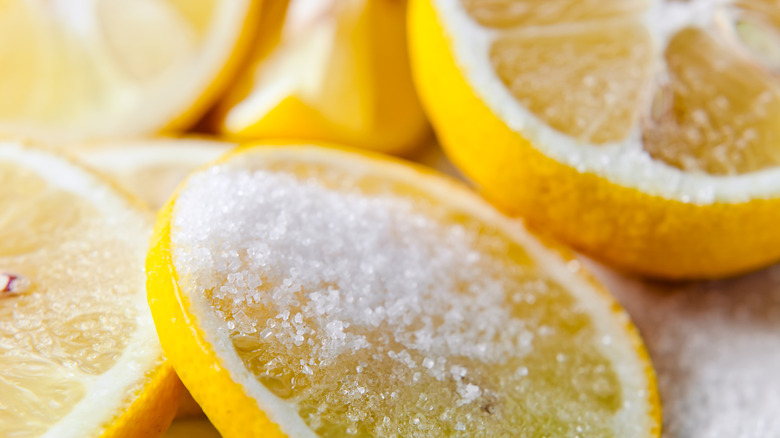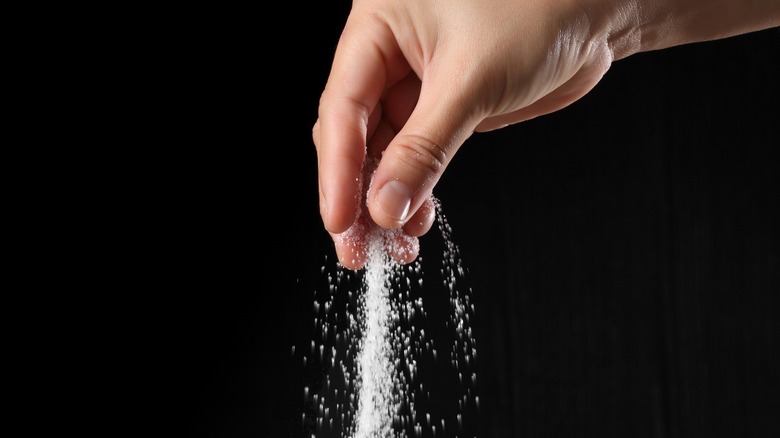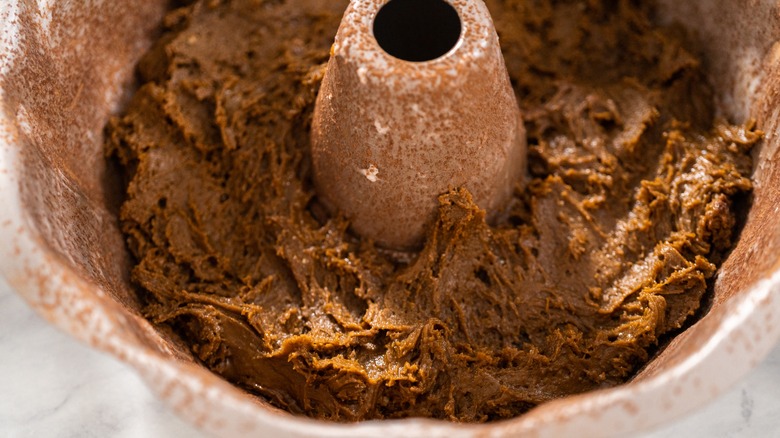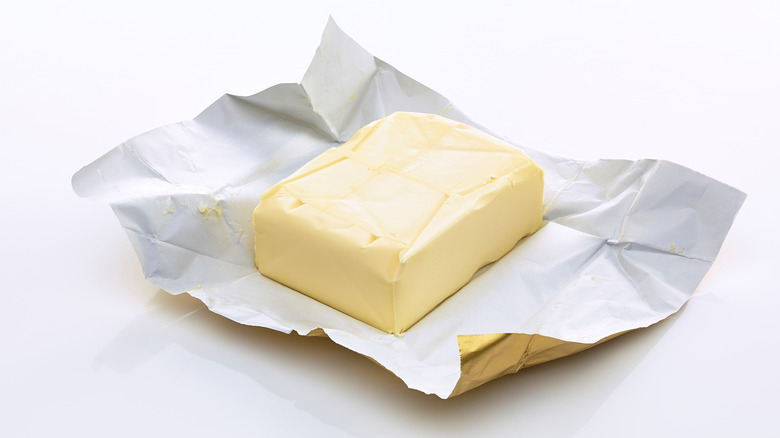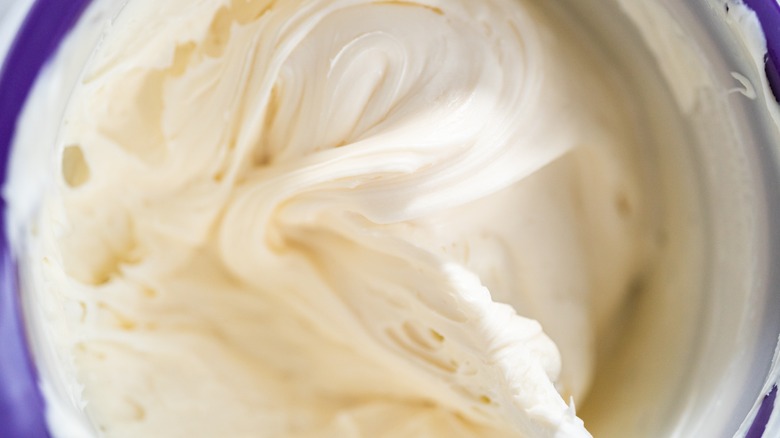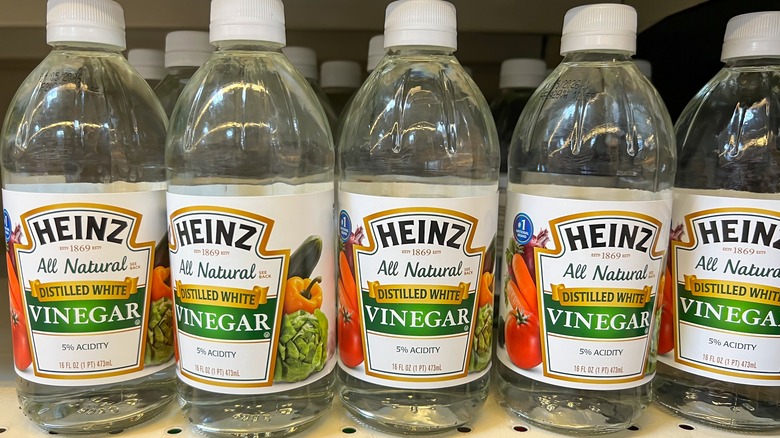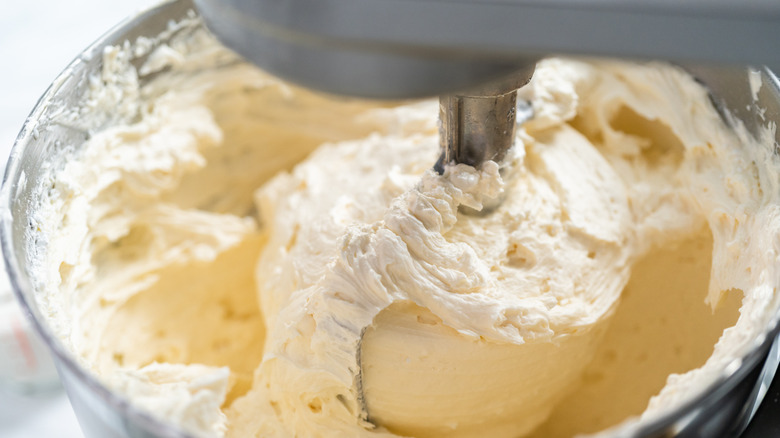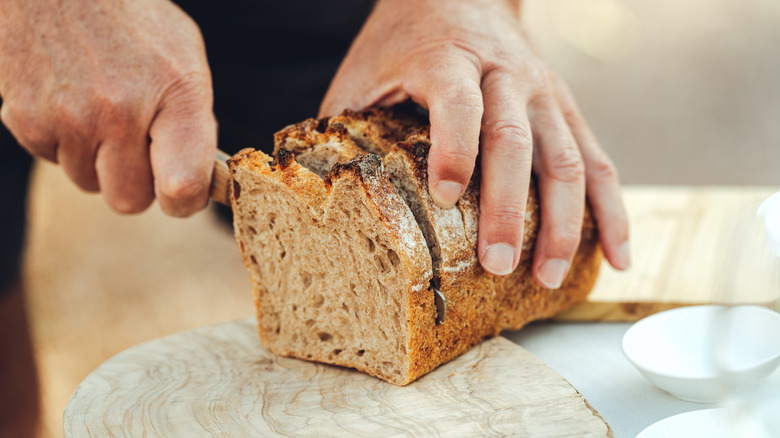20 Cake Hacks To Craft Perfect Confections Every Time
Do you leave baking up to the professionals, or do you consider yourself a master of sponges, frostings, and piping? For those more unfamiliar with making cake, the steps that go into baking, assembling, and decorating your dessert are nothing short of a learning curve. It takes years of experience to find out how to master finicky sponges or fragile meringues — but a person on the internet or a couple of YouTube videos may also suffice in your quest to master the cake.
We've compiled a list of some of the best hacks and tips for baking bakery-worthy cakes at home. Many of them use tools, ingredients, and materials that you already have in your baking cabinet or other spots in your kitchen. The key to baking great desserts is to be innovative — and by using these simple tricks, you'll find new ways to use staple ingredients to transform yourself into the ultimate cake baker.
Use a cupcake tin for mini layer cakes
Once you've mastered the art of making the perfect layer cake — with distinct sponge sheets and layers of frosting in between — you may consider scaling down to something more pint-sized. Mini layer cakes are perfect for serving at events and dinners, and you won't have to worry about guests taking two bites before walking away. The clever way for making mini-layer cakes without a special pan is using a cupcake tin instead. It's easier than making sheet pan cake and meticulously cutting rounds with a biscuit cutter, and you won't have a ton of cake discards to deal with.
To make this recipe hack at home, you'll need three cupcakes. Ice one cupcake as the base for the other layers, then add another one on top. From there, you can add a dowel to the center of the sponge for stability before carefully placing your third cupcake atop the others.
Pipe butter for the perfect loaf cake crack
One of the important visual characteristics of a loaf cake is that there is a very distinguished crack that runs down the center of it. However, loaf cakes tend to produce meanders in their cracks because the batter cooks unevenly, thus causing the steam to rise and split the top. The result is a rustic appearance but a tasty dessert nonetheless.
For the perfect crack in your loaf cake, pipe a line of softened butter on the top of the loaf cake to create an even split as the batter bakes. If you're working with a thick batter, you can manually create a partition on the top of the cake with a knife to control where the batter splits.
Add instant pudding for creamy frosting
Everyone has their secret ingredients in the kitchen. One of our favorite pantry goods to have on hand is a box of instant pudding. For a quick cake frosting, combine instant pudding, whipped topping (such as Cool-Whip), and milk in a bowl or stand mixer. The instant pudding creates a frosting that is not only easy to handle and pipe but one that is also more heat-tolerant than a finicky buttercream.
You can use almost any flavor of instant pudding for this recipe hack. While vanilla is the most compatible with diverse types of cake, you can also get creative and experiment with cheesecake-flavored, chocolate, or pistachio instant pudding. If you like the consistency of traditional buttercream, try mixing it with the instant pudding frosting to create a hybrid frosting.
Butter and chill your pan to prevent cake from sticking
One common, yet mostly easily avoidable, mistake people make is not greasing their cake tins before adding the batter. Although it might just be a quick slip in your memory, it can cause your cake to fall apart and have panic ensue for even the most experienced of bakers.
One of the most effective ways to properly grease your pan is to use butter. To prevent your cake from sticking to the pan, wipe melted butter around the sides of your chosen baking pan. You can use a pastry brush or just a wad of paper towels, but be sure to get all the crevasses to prevent any cake adherence. From there, you'll want to cool the pan in the freezer or refrigerator to solidify the butter buffer. Butter is more effective at acting as a barrier when it's in a solid state — plus, it won't leave a greasy residue on the outside of your cake.
Invest in a scale for even layer cakes
Baking is all about precision — which is why we recommend investing in a kitchen scale. You'll want to pull out your handy kitchen scale for perfectly even cake layers. Start by taking the weight of the batter (minus the bowl) and dividing it by the number of layers you're planning on making. Then, you can easily weigh each layer, adding or redistributing the batter as needed. You'll be rewarded with perfectly even, symmetrical layers on your cake.
Besides weighing out your cake layers, you should also use your kitchen scale to measure dry ingredients. Taking the extra step to convert your recipe into weights will create a more accurate baking experience and allow you to replicate the same results in your next bake more readily.
Line the bottom of your pan with a crispy ingredient
If you can't decide whether you want a cake or a pie, this hack is for you. To give the bottom of your cakes a tasty crust, add a crunchy coating to the bottom of your pan before spooning in your batter. This layer will create a buffer between the cake and the pan to prevent sticking and add a unique textural element that will diversify the consistency and aesthetic appeal of your dessert.
You can use numerous different toppings for this hack, including crushed graham crackers or crumbled cookies. You should use cocoa powder to flour the bottom of your chocolate cake pans because it will provide a chocolatey flavor and eliminate the appearance of chunky white flour clumps on a dark sponge. Using unsweetened cocoa powder for this hack is important so the sugar doesn't caramelize and burn on the pan.
A chef's knife will easily cut parchment
Cutting parchment to fit inside your cake pans is an awkward experience, to say the least. But, one unlikely kitchen tool will help make lining cake pans with parchment a snap.
The idea was initially suggested in an episode of Julia Child's "Baking with Julia." Her special guest, Markus Farbinger, shows Child how he uses a sharp chef's knife to cut the parchment to the perfect size for the bottom of the pan. He flips the pan over, places the parchment on top, and holds the parchment-covered pan with one hand and the knife in the other. The knife pushes down on the paper and causes it to tear into the perfect size needed to fit comfortably in the bottom of the pan.
Opt for parchment paper to keep your cake stand clean
Parchment paper isn't just useful for baking the sponge. You'll also want to keep a roll around for when it's time to decorate your cake.
Ina Garten's mess-free cake decorating trick uses parchment to help protect the cake stand. In a YouTube video, the Barefoot Contessa recommends first cutting a piece of parchment paper into squares. From there, she trims each square diagonally into triangles before tucking each underneath the edges of the cake. The parchment will collect any stray drops or pieces of frosting and can easily be pulled out from underneath the cake before serving. For the easiest removal, Garten recommends bakers use a paring knife to slip the paper out without causing any smearing.
Sprinkle turbinado sugar for a refined cake touch
The appearance of your cake arguably matters just as much as the taste. The secret finishing touch for bakery-ready cakes at home can be found in your pantry. If you want to add a bit of sophisticated flair to your loaf cakes, like banana bread and lemon poppyseed loaves, add a sprinkle of turbinado sugar to the top of your cakes before baking them.
Turbinado sugar is grouped into the group of raw sugars with Demerara sugar, but some subtle differences set it apart. It has a slight caramel flavor and will retain its crystal shape after baking. When you bite into a slice of cake topped with turbinado sugar, you'll immediately be met with crunchy, sublime pieces of sugar and a glossy appearance.
Edible markers and fondant make for easy decorating
Cake decorating always seems easy until you have a piping bag in your hand and a counter covered in buttercream. Duff Goldman's simple trick to take your decorating to the next level, and avoid the hassle of piping roses on your sheet cake, is to stick to fondant and edible markers. This baking essential, which is also called gum paste, is made from powdered sugar, water, and glycerin. It can be bought from a baking supply store (or you can make actually tasty fondant at home) and rolled into thin sheets for decorating, cutting, and shaping.
Once your fondant has been shaped, grab some edible ink markers and start designing your artwork. You can also mold fondant into shapes with the help of a few YouTube tutorials.
Beverage cans help make a perfectly light angel food cake
Have you ever had angel food cake? This unique, plush dessert gets its unique texture from the copious amount of air added to the batter. It's usually made in a unique pan, which resembles a bundt with flat sides. The center tunnel is essential to the perfect angel food cake because it provides scaffolding for egg whites.
If you don't have a special pan to make a soft, light angel food cake, you can use a tall beverage can wrapped in parchment. Fill the can with beans or pie weights and place it in the center of a pan with removable sides (like a springform). Line the base of the pan with parchment, add your batter, and bake your cake as you would in the angel food cake pan.
Add citrus sugar to brighten zesty cake flavors
Citrus is one of the most popular families of flavors to add to cakes. To elevate your next citrus cake, try adding a sprinkle of infused citrus sugar as a garnish for the cake or in the batter itself. Citrus sugar combines the zests of a chosen fruit, like lime, lemon, or orange, and granulated sugar. When the two are massaged together into the consistency of wet sand, the oils in the zest start to enhance the sweetness of the sugar and balance out the astringent notes of the fruit.
It's important only to include the fruit zest in the sugar rather than the white, bitter pith of the fruit. You'll need about 1 tablespoon of zest for each cup of sugar in the recipe. So grab your microplane and get zesty.
Sprinkle sugar on your cake to prevent it from rising too much
A proper rise is an important quality for all fluffy cakes to have. But too much of a rise can lead to the batter overflowing in the pan or a baker wasting a lot of cake when evening out their sponge layers. Chef Sonny Anderson adds a sprinkle of sugar to the top of her cakes to prevent the batter from rising too much as it bakes. Even the light weight of the sugar crystals will encourage the batter to stay compact in the pan.
Besides creating a more even layer cake, this tip adds a subtle sweetness to the outside of the dessert and a crunchy texture that makes the sponge intriguing to eat. So, don't put your granulated sugar away too soon after you've concocted your batter.
Plastic wrap can reach the nooks and crannies of your bundt tin
Bundt pans are notoriously sticky, so bakers must ensure their pans are fully greased and floured before baking to avoid missing chunks of cake. Food television personality Alton Brown's plastic wrap trick makes coating bundt cake pans easy.
Per a video shared on his Facebook page, Alton Brown recommends bakers coat their bundt pans with butter before adding 2 tablespoons of sugar or flour to the pan. He then recommends covering it with plastic wrap and vigorously shaking the pan until all the nooks and crannies are coated in a layer of the powder. Not only does this trick work, but it will prevent your kitchen and its surfaces from getting covered in flour and sugar.
Dip your spatula in hot water for easier frosting
Every baker has at least one horror story of trying to ice a cake. Although you can work with room-temperature buttercream icing, add softeners, and try to hack your icing, the key to getting a good swipe actually starts with your spatula. We recommend using an offset spatula with a narrow blade for optimal ergonomics. You should also start dipping your icing spatula in hot water before smoothing out your frosting for a professional, polished look.
After dipping the tool in hot water, dry it off with a towel (we don't want watery icing) and use the warm spatula to scrape and refine the edges of your cake. Clean off your spatula after each swipe to avoid smearing your icing.
Grease your pans with empty butter wrappers
If you go through a lot of butter when you're baking (and making copious amounts of buttercream), you may wonder what to do with those waxy butter wrappers. The last thing to do before throwing out this packaging is to reuse them to grease your pans. Rather than wasting a paper towel dipped in melted butter or oil, or dirtying a pastry brush, wad up the butter wrapper and use it to grease sheet pans, loaf pans, or cake pans.
You can also store your butter wrappers for greasing at another time. Freeze or refrigerate them in a plastic bag and bring them to room temperature before preparing your pans. Frozen wrappers can last upwards of a year, while refrigerated ones will be good for a few months.
Melt frosting to make decorating sheet cakes easier
Decorating a sheet cake is a pain in the behind — especially if you're trying to do it while the sponge itself is still in the baking pan. The quick trick that makes frosting sheet cakes even easier involves store-bought frosting, a microwave, and an offset spatula. As explained in a TikTok video, the frosting should be microwaved at 10-second intervals until it transforms into a liquid consistency. Then, it can be easily poured onto a sheet cake and cooled until it resembles a slightly hard texture once again.
This tip isn't just for sheet cakes; it can also be used for layer cakes. The liquid consistency of the melted icing is also very conducive to food coloring, which is perfect for upgrading your plain dessert into something more colorful.
Improve your frosting with a splash of white vinegar
The secret ingredient that will improve your frosting is likely already in your kitchen cabinet. Whether you're working with a decadent buttercream, consider adding a spoonful of white vinegar. Not only will it prevent your cake from cracking, but it will also keep your frosting soft, resulting in a smooth, flawless finish.
Since vinegar is obviously a very astringent ingredient, you must be careful with how much you add to your frosting. Less than a teaspoon of the acid will help balance out the sweetness of your frosting without imparting too many sour notes. It's the perfect remedy for people who find buttercream icing to always come out way too sweet — although it is just made of butter and sugar.
Always whip your store-bought frosting for easier application
There's no shame in buying store-bought ingredients. Commercial cake mixes and icings are convenient and allow you to focus on other important tasks — like decorating and doing dishes afterward. However, store-bought frosting always tends to be very gelatinous and overtly sweet, which causes many bakers to steer clear of them.
The way to transform your store-bought icing into something more palatable only involves a mixer. Use an electric or stand mixer to whip air into the store-bought frosting, which in turn makes it easier to spread on a cake. It's also an easy way to increase the volume of frosting you have on hand. Whipping can double the amount of frosting you have while also distributing the sweetness across more volume.
Press slices of bread against cake to slow staling
The most tedious part of making a cake is storing it. The bread tip for keeping your baked goods from going stale will also help keep the exposed parts of your cake moist. Press slices of bread (standard sandwich bread works) against the exposed sides of the cake and secure them with toothpicks. Since the bread, rather than the side of the cake, is exposed to oxygen, it will dry out first. You can even use bread that is almost ready to toss for this simple storage hack.
Besides cake, you can also use this trick to keep your brownies and your cookies from going stale. Toss a slice of bread with the treats in an airtight storage container. Your bread will be hard within a few days, but your other baked goods will remain soft, plush, and good enough to eat.
